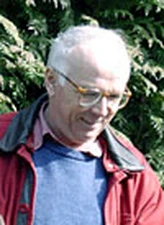Claude F. Boutron

The 2007 Alfred Wegener Medal & Honorary Membership is awarded to Claude F. Boutron for his impressive contributions to improving our scientific knowledge of atmospheric geochemical cycles of heavy metals and their alteration by human activities.
Professor Claude Boutron is one of the top leaders in the research of glaciology and atmospheric chemistry. In an impressive scientific career, he has developed critically important scientific knowledge concerning atmospheric geochemical cycles of heavy metals and their alteration by human activities. This knowledge was obtained by analyzing a large variety of snow and ice cores from Greenland, Antarctica, Latin America and the Alps for a wide range of heavy metals (especially Pb, Hg, Cd, Cu, Pt, Pd, Rh and U).
One of Professor Boutron’s major achievement was to develop sophisticated techniques suitable for the reliable determination of heavy metals at the incredibly low concentration levels of less than 0.1 picogram per gram at which these metals are found in Greenland and Antarctic snow and ice cores. Also, he initiated a network of international collaborators with leading research institutes in Australia, Russia, the United States, Belgium and Italy for the development of innovative ultra sensitive analytical techniques.
Among the most spectacular results, which were obtained by Prof Boutron, is the evidence of an early large-scale atmospheric pollution for Pb and Cu two millennia ago during the peak of the Roman civilization, long before the Industrial Revolution This history was a crucial factor in the development and fall of the successive civilizations and is of considerable interest to archeologists.
Extremely interesting results were also obtained about the history of atmospheric pollution for Pb since the Industrial Revolution in both hemispheres. They clearly showed a dramatic increase in Pb concentration in Greenland snow from the 1930s to the late 1960s because of the massive rise in the use of lead alkyl additives in gasoline, and the subsequent decrease after the early 1970s as a consequence of the decrease in the use of these additives. This and similar results for Antarctica show that atmospheric pollution for heavy metals has reached the most remote areas of our planet.
Other investigations conducted by Prof. Boutron deal with observed changes in Hg concentrations in Antarctic ice during the past 40000 years showing that a large fraction of this metal originated from the emissions of gaseous Hg from productive ocean regions.
Most recently Prof. Boutron presented the first time series of uranium in snow and ice cores from the Mont Blanc. It shows a pronounced enhancement after World War 2, in particular due to the atmospheric transport of dust particles emanating from intensive mining and smelting activities in the former German Democratic Republic.
Professor Boutron is an investigator of exceptional capability using sophisticated techniques whose sensitivities and accuracies are presently without peer within the world’s scientific community. He has made outstanding contributions to the scientific understanding of the pollution history of the Earth from the Antiquity to present times. Moreover, his European Research Course on Atmosphere has now a very high reputation gathering each year more than 50 students from many different nations and backgrounds.
